William Turner
Bottesford bell ringer and gardener to four rectors
Neil Fortey
This post is incomplete, a ‘work in progress’. Dealing with the history of bell ringing and the peel at St Mary’s, Bottesford, as well as the history of chrysanthemum breeds, there is considerable scope for additions and corrections from people who know much more about these topics than I do to add their contributions (as comments or by emailing them to info@bottesfordhistory.org.uk), which will be gratefully received.
Introduction
On April 17th, 2021, after over a year in which the bells of St Mary’s had been silent through the Covid-19 pandemic, the solemn toll of the muffled 22 cwt tenor in the church tower rang out 99 times, a Funeral Toll for the Duke of Edinburgh, who was buried that day at Windsor Castle. The ringer was the Tower Captain, Mr David Jones, who played his part with distinction. It had also been rung by Mr Jones 75 times to mark VJ Day on the 15th August 2020, once for each year since the end of the Second World War.
The Oxford Refrence Dictionary tells us that the Passing Bell was in early use, a bell rung for a dying person at the point of death, as a signal for prayers for the departing soul; later, a bell rung immediately after a person’s death. The Catholic Dictionary gives this definition: The ancient custom in Catholic localities of ringing the church bell slowly when a death is imminent in a parish. When the sick person is near death, the solemn tones of the bell remind the faithful of their Christian duty to pray for the person’s happy death. After the death, another bell tolls out the person’s age–one short stroke for each year. Wikipedia gives a little more detail: Historically, a bell would be rung on three occasions around the time of a death. The first was the “passing bell” to warn of impending death, followed by the death knell which was the ringing of a bell immediately after the death, and the last was the “lych bell”, or “corpse bell” which was rung at the funeral as the procession approached the church. This latter is closest to what is known today as the Funeral toll.
Such traditions go back to medieval times, when a tolls marked the passage of the day and of the year. The One O’Clock bell was rung to tell villagers, especially those out in the fields, when to stop for lunch (or go back to work, perhaps). At the end of the day, the Curfew bell was rung to indicate when to close the door for the night. A bell would be rung to mark the events of the church year, the festivals and saints’ days, to summon parishioners to services, and to mark the great moments of life, christening, marriage and burial. Over the centuries, especially after the Reformation, bells were rung less often, but traditions lived on, some until the early part of the 20th Century and some are continued today.
At the turn of the 20th Century, when Queen Victoria was still on the throne, the Passing Bell was rung by Mr William Turner, a long-serving bell ringer. After his retirement, probably in 1919, William Turner left Bottesford and moved to Hayes, Bromley, in Kent, close to his birthplace, where he lived until his death aged 99. While living there, in 1946, he responded to a short article published by the Grantham Journal in which Mr Geeson of Coddington, near Newark, sought information about the Curfew bell at Bottesford. Two replies written by Mr Turner to Mr Geeson in December 1946 have been preserved by Peter Topps, former Chairman of the Bottesford Local History Society, accompanied by a photograph of William Turner, aged 94, taken by his grandson at his home in Kent.
William Turner was a gardener employed by four successive Rectors of Bottesford, and was also a bellringer. In one of his letter, he recalls that he recorded the names of the people for whom he rang the Passing Bell, writing their names on boards beneath the clock mechanism in the belfry. Sadly, as he also relates, the boards are no longer there, having been lost when the ringing chamber was lowered after the First World War to relieve the stress on the tower.
In the 19th Century, a clock mechanism was installed in the old ringing chamber, so that the hours would be rung automatically. However, it appears from Mr Geeson’s query published Dec.6th 1946 that the curfew was rung up to the First World War and the one o’clock bell might have survived until William Turner retired perhaps in 1919. However, in his reply published December 27th William Turner refers to his ringing of the Passing Bell, but does not mention the other bells. In addition, his letter to Mr Geeson of Dec.14th says that “I can’t say anything about the 1 o’clock and the 8 o’clock Curfew. I expect it was stopped on account of the War “. It’s difficult to know what he meant here. Was he saying that the 1 o’clock and curfew bells might have been rung by hand until during the First World War, but he could not remember if this was the case?
The tradition of bell ringing in Bottesford dates at least from the 16th Century when, according to Thomas Young, there were five bells in the reign of Edward the 6th. Indeed, the surviving 6th bell is believed to have been cast as early as 1490. However, by the time William Turner began ringing there were six bells, including the passing bell which was the 27 cwt tenor, dating from 1809. In 1903 the peel was increased to eight bells with the addition of the two highest pitched bells, numbers 1 and 2, made by John Taylor’s bell foundry in Loughborough: Taylor’s also recast the 7th at this time.
Thomas North was born at Melton Mowbray in 1824. Educated at Melton Grammar School, he worked as a solicitor’s clerk and a bank clerk, living in Leicester. After retiring in 1871 to the Isle of Wight, on the grounds of ill health, he was elected to the Society of Antiquaries in 1875. He died on the 27th February, 1884. As described by The Whiting Society, he published The Church Bells of Leicestershire in 1876.
Family history
William Turner was born in 1852, baptised on the 29th August at St Martin of Tours, in Ashurst, Kent, son of the parish clerk, Henry Turner, and his wife Harriett. However, his parents evidently died not very long afterwards, and in the censuses we find William in the care of his grandparents John and Elizabeth Sargent, in 1861 in Ashurst (with his sister Harriett), then in 1871 in Speldhurst. But by 1881 William, with his first wife, Martha, had moved to 2 Easthorpe Road, where they had three children, Frederick William, aged 2 and born in Speldhurst, together with one year old Harry Louis (also known as Louis Henry) and newly born Ernest, both born in Bottesford (a fourth son, William, was born in 1882 again in Bottesford). Evidently, the couple had been in Bottesford less than two years. William was already working as a domestic gardener. The family stayed in the house, one of two estate cottages which still stand by the junction of Rutland Lane and Easthorpe Road, at least until 1901. Indeed, William was still there in 1911, but now living on his own following Martha’s death.
All four sons served in the First World War and survived. Frederick was in the Royal Engineers, Ernest with the Kings Royal Rifle Corps. While in service, Ernest changed his name to Thackeray-Turner). Service records for Louis and William have not been found, but their names are on the list of Bottesford servicemen compiled soon after the end of the war and later discovered inside the parish church organ.
Martha was born Martha Patch on the 13th January 1847 in Norton sub Hambdon, Somerset, daughter of labourer David Patch and his wife Ann. In 1861 they lived on Little Street, Norton sub Hambdon, where both Ann and Martha (now 14) worked as ‘sewers of gloves’. Martha now had three younger brothers and two younger sisters. She and William were married in 1875 at Wandsworth, London. There is a record of the death of Martha Turner at Tunbridge Wells in 1917. William was a Kentish man, and must be likely that this was the death of his first wife.
In 1939, the national register records that William, a retired gardener, and Elizabeth A. Turner, is second wife, were at 4 Everard Avenue in Bromley, Kent. The letters written in 1946 indicate that he was still there at this date, now aged 94. So far, we do not know when he died.
There is a record of one Elizabeth M. Turner who died in the second quarter of 1957 at Bromley, Kent, aged 72 (thus born in 1885), who may have been William Turner’s second wife, Elizabeth.
Transcripts of the letters
Both were preserved in one of the original envelopes, on which was written ‘Letters from Mr Turner formerly gardener at the Rectory and ringer of the 1 o’clock church bell and the curfew bell at 8.0 p.m.’
Both letters were addressed to:
Mr & Mrs Geeson
Hall Farm
Coddington
Newark
Notts
The first letter reads as follows:
4 Everard Avenue
Hayes Bromley
Kent
14/12/46
Dear Mr Geeson,
I am sure you will be surprised to get a letter from me. I will explain why I take the liberty. Well, today I have received a cutting from a friend at Bottesford from the Grantham Journal and almost by the same post I received from a friend at Carlton a G Journal with the same news as the cutting containing your letter to the Journal re the 8 pm Curfew and the 1 o’clock bell, wit my name attached. You may guess I was excited, there was one mistake but that is insignificant. My name is not John but William, and I was gardener at the Rectory for 40 years within a few months and served under 4 Rectors, and I was the chief Passing Bell ringer both for John Hardy & Joseph Burnett as neither of them could raise the 28 cwt Tenor Bell. I rang it just about a 1000 times. I put each name down on boards under the clock, row upon row, but now they are all destroyed as the Belfry has been lowered in the Tower and now the Passing Bell is jangled from the floor on the chiming apparatus by the present verger J Robinson (or was when I left Bottesford). I can’t say anything about the 1 o’clock and the 8 o’clock Curfew. I expect it was stopped on account of the War and I don’t expect the Vergers wanted to begin it again as it was rather a tie to stay at home every day, but I remember the wife used to do it occasionally when the husband was fast. I hear from your aunt Annie that she has left the shop & gone into lodging which I think she was very wise to do, for it was not fit for her to live by herself and carry on the business at her time of life. At the same time I think it a pity that none of the family of Geesons could take the shop and carry on. Now the old honured name of Geeson will die out. When I first went to Bottesford your grandad was in his Prime and was highly honoured and respected, and I think had the best to witness in the village, and we always dealt with them. Now I will close, wishing you a Very Happy Xmas and thank you for remembering me in your letter to the Journal. I am pleased to say I am enjoying good health and able to do my garden, digging, planting, sowing, pruning, and I have got a very comfortable home and good partner to tend to me, and I hope you have the same. Blessings, Thanks be to God the Father of Mercies and Giver of all.
Yours Faithfully,
Wm Turner
(I will be writing to aunt Annie for Xmas)
This letter makes reference to John Hardy and Joseph Burnett. John Hardy was a carpenter who, with his wife Lucy, lived at the Belvoir Coffee House on Bottesford Market Place, which he managed for over thirty years. During this time he served as Sexton, Parish Clerk and Town Crier. He is one of the figures in the old Hardy family wedding photograph. Joseph Burnett was a blacksmith from Hutton-le-Dale in Yorkshire. He and his wife Mary lived on Spalton’s Row (now Wyggeston Cottages) and later on Church Street, working in the forge that stood by the Red Lion (until the start of the Second World War). In 1911 we know that his son Edward also worked at the forge. In his latter years, Jospeh Burnett became Parish Clerk. He died in 1919 and is buried in St Mary’s churchyard.Joseph Burnett is glimpsed next to Albert Asher in the doorway of a cottage on Church Street behind the newly formed Scout Troupe. William Turner’s letter implies that both John Hardy and Jospeh Burnett were senior bellringers, perhaps Tower-Captains, and that Turner was part of their ringing teams.
The second letter runs as folllows:
4 Everard Avenue
Hayes Bromley
Kent
23/12/46
Dear Mr Geeson,
I feel I must write you a few lines to wish you and your wife a very happy Xmas, and to thank you for your very nice and interesting letter, which I thankfully received so quickly in answer to mine. By your address, I conclude you have taken to farming. If so, I am afraid you have not had a very prosperous year with so much wet. I felt very sorry for the farmers at the continuing rain, and the seed sowing this autumn has been no better, but it’s no use complaining for poor man, not even the scientists can control the weather. We must leave that in the hands of God who promised that seed time and Harvest shall not fail while the Earth remaineth and His Promise has been kept for near 6 thousand years. Se we will trust Him for the future and be thankful. I hope the coming year will be better so I will wish you a Happy and Prosperous New Year. I see you have a good partner descended from very notable farmers and pig breeders and prizetakers, and well remember Richmond and his father Daniel and Mrs Dable [Daybell], also three of their daughters, and Herbert who I wonder is still keeping on the same farm. Then there was William Daybell at the Church Farm and is William who Married Julia White, a school teacher. They started a milk business in Grantham. I am pleased to know you have a happy pair of children, the boy will be able to carry on the honoured name of Geeson and will son be a good help to you on the farm, and your wife being a farmer’s daughter will be a great help too especially in the Dairy and Poultry business. I wrote to your aunt Annie the other day just to cheer her up a bit. I think most people like to receive a letter especially at Christmas. I have sent six letters to Bottesford and about a dozen to other folks so it has kept me busy lately. I can see you are looking forward to the future, when your son is old enough to run the farm you will retire and live in your own house which I have been in many times, the first tenant I remember was a retired policeman, then Mr Fryer, then Mrs Sherwin retired publican, then Mr Collett retired schoolmaster, so it seems to be a house for a retired person, your turn next!!!
Kind regards to you from yours sincerely Wm Turner
Photo caption
The envelope with the two letters also contained a black and white photo of William Turner at home in Bromley, on the back of which is written: This snap was taken by my grandson July 1946 to celebrate my 94th birthday, on the steps of the bow window facing the back garden. W.J.
Who were the four rectors?
Who were the four Rectors that employed William as their gardner? Charles Frederick John Norman (1846-1889), Robert Manners Norman (1889-1895), William Vincent-Jackson (1895 to 1918) and Frank Walford (1918 – 1943). William Turner was at work in Bottesford before 1895, having moved there from Speldhurst, Kent, about 1879 (after the birth of his oldest son Frederick William at Speldhurst and before the burial of his daughter Flora Kate, aged 3, at Bottesford in September 1879). This indicates that his forty years lasted until about 1919, by which date Canon Walford had been Rector for a year or so. By this date William Turner was 67 years old, the Great War had ended and William’s four sons had all come through their service on the Western Front, a good time to retire.
The only problem with this interpretation is that in his first letter William implies that the curfew and 1 o’clock bells probably ceased to be rung at the start of the First World War but he was not able to be certain of this, suggesting that he had already left the village by this time. Perhaps I am mis-understanding this part of the letter, as otherwise the dates strongly suggest that he remained at work as a gardner until about 1919. But was he still ringing the bells up until this date? This is not stated in the letters, and it may be unlikely that a 67 year old would have been ringing the passing bell at this age. Indeed, did the passing bell continue to be rung at all through the war years?
Later, Thomas (Tommy) Robinson was sexton as well as being a bell ringer. He probably took over from William Turner, on returning from war service.
The William Turner chrysanthemum
William Turner was a domestic gardener working in the Rectory garden for some fourty years. It is said that the well-known chrysanthemum ‘William Turner’ was his creation, but it has been difficult to confirm this; might it be named after the 16th Century divine and naturalist, William Turner, the “father of English botany”. The Backyard Gardener website (www.backyardgardener.com) refers to it as “an exhibition mum of the irregular incurve variety that bears quite large flowers in white.”
The New Zealand newspaper archive (https://paperspast.natlib.govt.nz/newspapers/OW19150519.2.69.5.51?query=turner) has an extract from the Otago Witness, Issue 3192, of the 19th May, 1915, which shows a black and white photograph of the chrysanthemum variety ‘William Turner’ grown by a Mr F Cheyne Mosgiel. It seems remarkable that a variety produced in Bottesford could have become established right across the world, but not impossible. It would be hoped that further information might emerge to confirm this in due course.
Neither of these sources record the origin of the variety’s name.

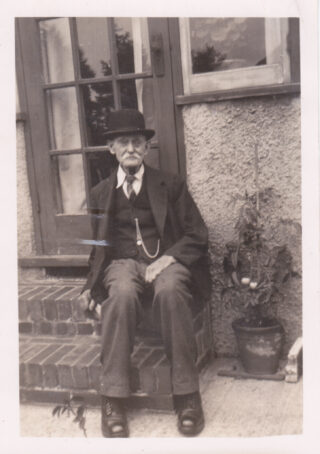
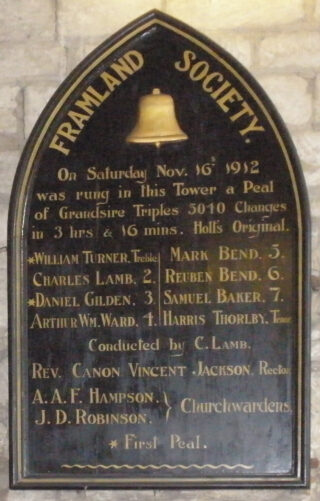
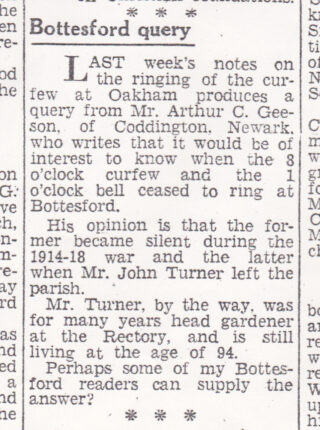
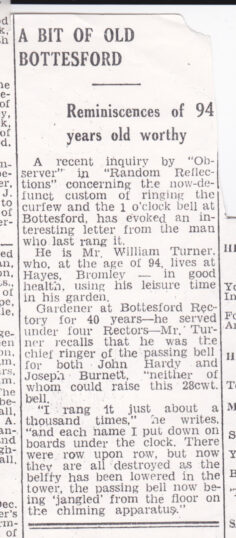
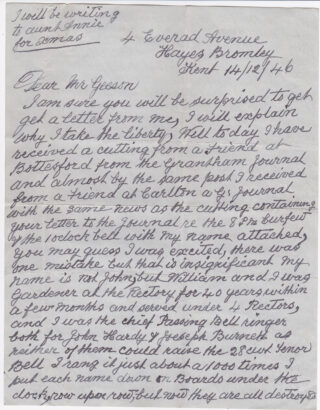
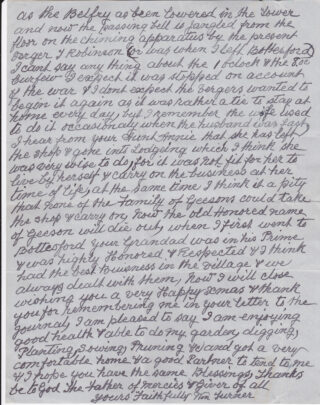
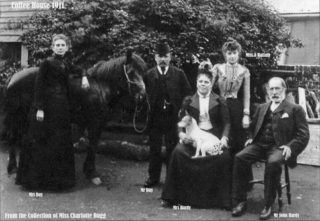
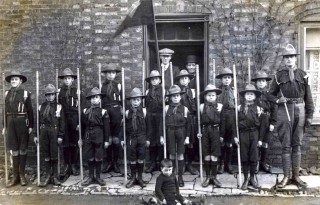
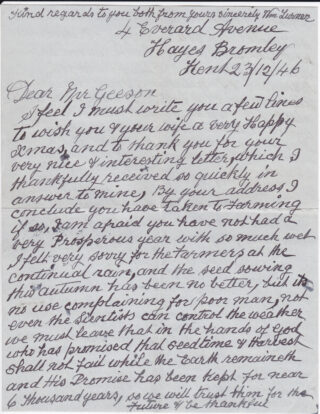
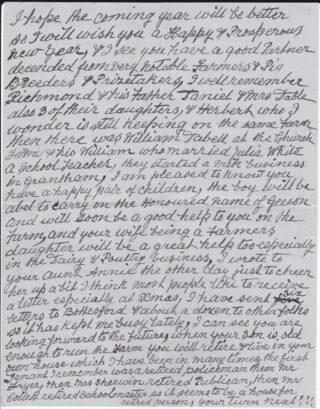








No Comments
Add a comment about this page